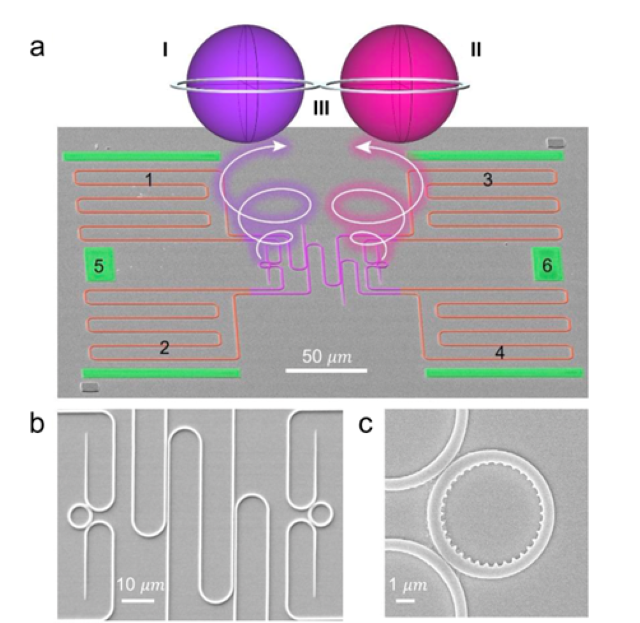The current invention describes next-generation high-capacity noise-resilient communication and computing technology. The invention describes a method to coherently generate high-dimensional structured light, including spin-orbit states, in an integrated and scalable way.
Problem:
On-chip information technologies are mostly limited to two-level systems due to the lack of sufficient reconfigurability to satisfy the stringent requirement for degrees of freedom, i.e., for a system with more than two energy levels, a very large number of independent parameters or degrees of freedom must be precisely controlled to generate the desired high-dimensional structured light. Generally, the expansion of dimensionalities relies on the complicated interferometric setup, which is cumbersome, requires manual tuning, and is not scalable. Recent developed vector lasers and microcavities could increase the dimensionality in a more compact way. However, it still remains a challenge to actively tune the diversified, high-dimensional superposition states of light on demand. Thus coherent generation of high-dimensional structured light, including spin-orbit states, does not seem to be practical for large-scale production.
Solution:
The current invention demonstrates a semiconductor micro laser exploiting spin-orbit coupling of light, wherein the polarization of the light becomes dependent on the on-chip direction of propagation, increasing the number of degrees of freedom by generating structured light states with unique polarization and phase properties. Two microcavities, coupled through a non-Hermitian synthetic gauge field, are designed to emit structured light states with six degrees of freedom using the spin-orbit coupling of light, allowing for a much larger amount of information to be encoded and processed.
Technology:
A hyperdimensional, spin-orbit microlaser for chip-scale flexible generation and manipulation of arbitrary four-level states, which uses integrated photonic circuits on the III/V semiconductor platform to emit spin-orbit states and uses an external laser to control the on-chip coupling, thereby coherently generating all the spin-orbit superposition states in the 4-dimensional Hilbert space. Tunable asymmetric couplings enabled by a synthetic imaginary gauge field provide flexible control of up to six degrees of freedom (DOFs), thus enabling the full coverage of a 4D Hilbert space. The vectorial state of the emitted laser beam in free space is mapped on a Bloch hypersphere defining an SU(4) symmetry, which demonstrates the dynamical generation and reconfiguration of high-dimensional superposition states with high fidelity.
Advantages:
- Potential to further promote the precision limit in metrology, imaging, and information science.
- The carefully selected four spin-orbit-coupled states possess the same propagation properties and completely overlap in both space and time, thereby maintaining long-distance coherence, which is ideal for free-space quantum communication, including satellite-to-earth communication, tower to tower communication, and intracity communication.
- Space-division multiplexing can be used to transmit information with the use of the spin-orbit microlaser, increasing the channel capacity and the security of the communication channel.

(a) The hyperdimensional microlaser, emitting in a 4D Hilbert space, consists of two same-sized microrings fabricated on a III-V semiconductor platform with 200 nm thick InGaAsP multiple quantum wells. The micro rings are coupled through an imaginary gauge formed by four control waveguides, which are themselves connected using two 3-dB directional couplers. (b) Scanning Electron Microscope (SEM) image of the 3 dB directional coupler. (c) Scanning Electron Microscope (SEM) image of the right microring laser with the angular grating inscribed on the inner side wall.